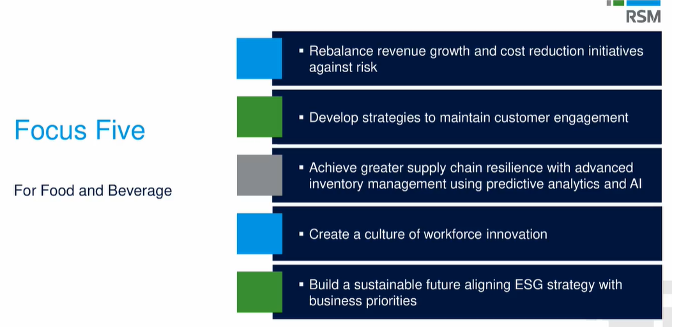Inflation profoundly impacts every industry, but particularly food and beverage, which was the focus of a recent Food Institute webinar featuring Dr. Anna Wong, Chief U.S. Economist at Bloomberg, and Karen Galivan, Tax Partner and Consumer Products Partner at RSM.
The industry experts discussed how rising prices are reshaping the F&B sector, the potential for a recession in 2025, and actionable strategies for businesses navigating the ever-evolving economic landscape.
Labor Market Dynamics
According to Dr. Wong, the primary question being asked regarding the health of the U.S. economy is: Has the labor market deteriorated enough to prompt a recession?
Wong said there were approximately two job openings for every unemployed person during the 2020 pandemic.
Four years later, that ratio has been cut in half to around 1:1, and many of the current job postings are either for “ghost” roles that were filled but never removed or were never legitimate in the first place. Wong believes that, while the labor market remains tight, it is also showing signs of loosening — however, Bloomberg is forecasting the unemployment rate to rise to 4.5% by the end of 2024.
Despite these concerning statistics, Galivan shared that over half of the middle-market executives surveyed by RSM anticipate economic improvement in late 2024 and early 2025. However, pandemic-era savings are depleting rapidly and expected to be exhausted by mid-2024.
Inflation and Consumer Behavior
Although inflation has cooled to its lowest rate since 2021, high prices in key areas like energy and housing continue to burden consumers.
Supply chain disruptions and geopolitical tensions are contributing factors, and the decline in inflation has slightly improved purchasing power — but many consumers are still opting for private-label items and value-driven stores.
Mergers and Acquisitions
On a positive note, Galivan shared that M&A activity in the F&B sector remains robust, particularly in the North American beverage space.
Companies are pursuing strategic expansions and partnerships, as well as focusing on product innovation and consolidation to remain competitive amid slight declines in overall capital investment.
Resilience vs. Recklessness
During the webinar, Wong pointed out that the word “resilience” is often misused in conversations of an economic nature. She said that, many times, the more accurate term would be “overspending.”
She corroborated this view by mentioning that the 2024 consumer savings rate has fallen to a level last seen on the eve of the 2008 financial crisis, which reveals that consumers are outspending their income growth.
Credit card delinquency rates are on the rise, and younger generations are maxing out their credit limits at disproportionate rates, including:
- 3% of Gen Z
- 1% of Millennials
- 6% of Gen X
- 8% of Baby Boomers
The “Focus Five” for F&B Companies
To adapt to these fluctuating economic conditions, Galivan recommends that businesses focus on five key areas:
The Federal Reserve’s Balancing Act
The Federal Reserve slashed interest rates by 50 basis points on September 18, marking the first cut since March of 2020.
This move aims to ease borrowing costs and stimulate growth to support the labor market and control inflation; however, it also carries the risk of reigniting inflationary pressures. The Fed must carefully balance its dual mandate of promoting employment while maintaining price stability.
Though these rate cuts may offer some relief, food and beverage companies must focus on innovation, sustainability, and consumer engagement to navigate the complex market and uncertain economic conditions.
The Food Institute Podcast
Restaurant results for the second quarter weren’t stellar, but people still need to eat. Are they turning to their refrigerators, or are restaurants still on the menu for consumers? Circana Senior Vice President David Portalatin joined The Food Institute Podcast to discuss the makeup of the current restaurant customer amid a rising trend of home-centricity.













